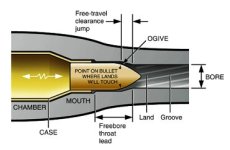S
S/S
Guest
What does "zero" freebore mean.
Have heard the term zero freebore used when chambering a barrel. Not sure just what it means.
S S
Have heard the term zero freebore used when chambering a barrel. Not sure just what it means.
S S


